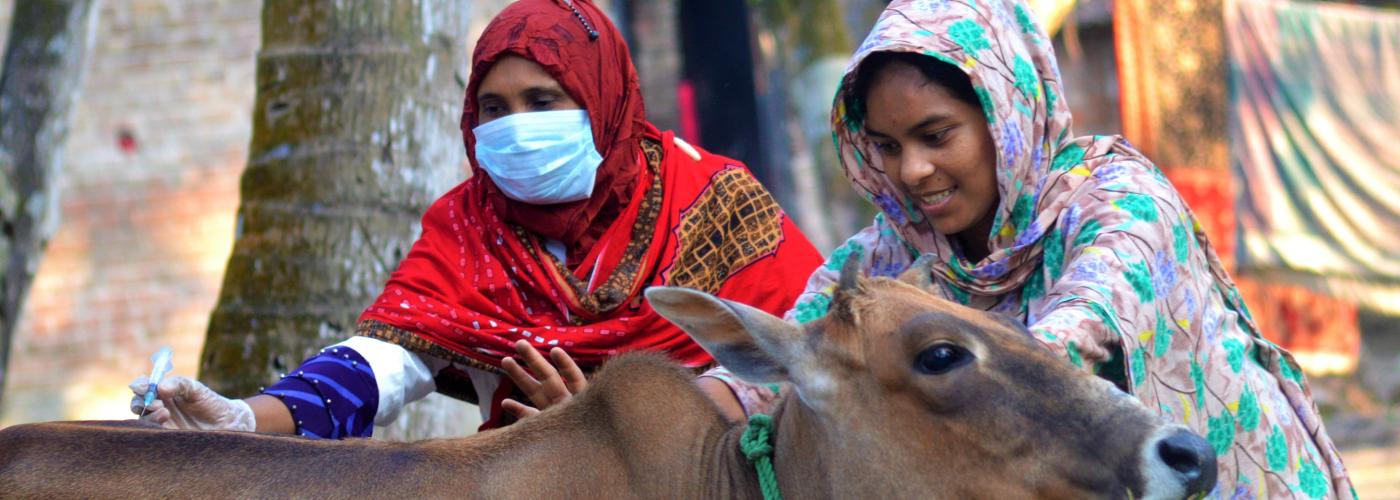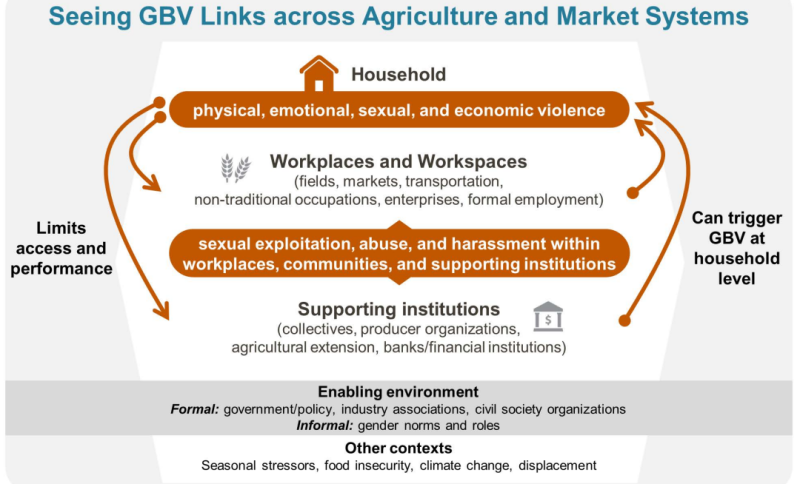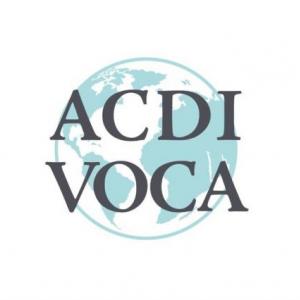What Are the Linkages between Inclusion, Risk, and Market Systems Resilience?
Image

Inclusion contributes to greater market connectivity, one of the key determinants of market system resilience. People—including those traditionally excluded from or marginalized by market systems, such as women, youth, LGBTQI+ individuals, people with disabilities, and indigenous or other identity groups—are human resources. They are critical for enabling a system to better absorb, adapt, or transform when faced with shocks and stresses.
Agriculture and market systems development programs aim to facilitate the participation of traditionally excluded individuals, who may be smallholder farmers, employees, or entrepreneurs. But it is essential that it be done in a way that recognizes the principle of “do no harm.” Identifying potential risks to women, youth, persons with disabilities, LGBTQI+, and others and implementing mitigating actions is necessary for groups to fully participate in and benefit from new market opportunities. Risk mitigation addresses potential negative outcomes of market participation, allowing individuals to fully engage in economic opportunities and build resiliency. Ignoring or not addressing risks creates greater vulnerability to shocks and stressors and weakens a system’s ability to absorb, adapt, or transform.
The Risk of Gender-Based Violence
Gender-based violence (GBV) is one such risk. GBV can occur throughout agriculture and market systems and overwhelmingly affects women and girls, as documented in the recent Toolkit to Address Gender-Based Violence in Agriculture and Market Systems Development developed by the Feed the Future Advancing Women’s Empowerment Program. As shown in the graphic below, different forms of GBV can occur at different levels of a system, including in households, workplaces, and supporting institutions. This can affect market systems resiliency in various ways.
Image

How Businesses Can Account for Risk
Within USAID’s market systems resilience framework, one characteristic of a proactive market system is that firms’ business strategies are focused on delivering value for customers, suppliers, and staff. Business strategies that focus on creating value and developing human capital can enable a market system to respond effectively or innovate in a time of shock or stress. Identifying and mitigating the risk of GBV is a strategy that businesses can develop to increase inclusion and deliver real value to female staff and suppliers. Improved systems that protect human capital create greater stability and value for customers and employees and create feedback loops that improve market systems resilience.
What else can be done to reduce risks, like GBV, so that once-excluded populations engage in the market system while increasing its resiliency?
The Feed the Future Bangladesh Livestock and Nutrition Activity approached this question by developing a gender, youth, and social inclusion (GYSI) risk mitigation strategy. After conducting a GYSI analysis focused on the livestock sector, the Activity developed a GYSI strategy. Because one of the key principles of that strategy was “do no harm,” the team developed a complementary GYSI risk mitigation plan to identify potential risks (physical, social, and financial) for women, youth, and other groups.
Lessons from Bangladesh in Risk Mitigation Planning
A potential risk surfaced that, given the gender and social norms, many women and female youth LSPs may face harassment or physical safety threats when traveling alone and visiting clients to provide services. To address the risk, the GYSI advisor developed guidelines and a safety module into the LSP foundational training for women to ensure they are prepared with safety practices when providing services. The Activity is also researching transportation options for women to travel safely and efficiently while providing services instead of walking which is common.
Going forward, the Activity is sharing the risk mitigation plan with input providers, large dairy and meat processors, financial institutions, and other livestock market actors during its co-creation process with partners. The team is also highlighting risks that may be relevant to partners. For example, many partners work with female LSPs, so it is important to consider women’s safety while providing services. The Activity is also working with partners to identify and mitigate risks that affect the inclusion of women and youth in their business models as well as other potential GYSI risks that may be specific to their businesses.
With the GYSI risk mitigation plan, the Activity is not only facilitating the safe inclusion of women and youth in the livestock sector but also supporting businesses to understand and address risks for women and youth. This allows businesses to deliver value to female suppliers and staff, thus contributing to an increased resilience capacity of the livestock market system in Bangladesh.


